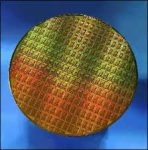Samsung is warming up and spending again
Samsung gave its preliminary report for Q4 and it was well better than prior muted expectations. It doesn’t take long for Samsung’s business units to respond to business trends in either direction and we have already heard of increased spending plans on the part of Samsung.… Read More
 MZ Technologies Launches Advanced Packaging Design Video SeriesIn a significant move aimed at empowering semiconductor…Read More
MZ Technologies Launches Advanced Packaging Design Video SeriesIn a significant move aimed at empowering semiconductor…Read More Superhuman AI for Design Verification, Delivered at ScaleThere is a new breed of EDA emerging.…Read More
Superhuman AI for Design Verification, Delivered at ScaleThere is a new breed of EDA emerging.…Read More The Quantum Threat: Why Industrial Control Systems Must Be Ready and How PQShield Is Leading the DefenseIndustrial control systems (ICS) underpin the world’s most…Read More
The Quantum Threat: Why Industrial Control Systems Must Be Ready and How PQShield Is Leading the DefenseIndustrial control systems (ICS) underpin the world’s most…Read More Radio Frequency Integrated Circuits (RFICs) Generated by AI Based Design AutomationBy Jason Liu, RFIC-GPT Inc. Radio frequency integrated…Read More
Radio Frequency Integrated Circuits (RFICs) Generated by AI Based Design AutomationBy Jason Liu, RFIC-GPT Inc. Radio frequency integrated…Read MoreCycling and CES 2020
It’s a new year, so time to share with you all things cycling being shown at CES. Yes, most of CES is devoted to new TV displays, futuristic automobiles, all things 5G, laptops and mobile phones, but there’s a growing segment of consumer products for fitness, and cycling happens to be my fitness passion. Riding a bike … Read More
Banks are Developing Digital Currencies and Opening Themselves to Cyber Risk!
Cybersecurity will be hard pressed to take on the new challenges of bank managed digital currencies.
Banks are developing their own digital currencies. The introduction of Central Bank Digital Currencies (CBDC) is the beginning of an interesting trend that will change the cybersecurity dynamic for banking as it opens up an … Read More
China in 2020: Lower profits, more bankruptcies, and new challenges doing business
This is the fifth and final part of the series
For many industrial businesses, 2019 has been tough. Profits lower across the board – light and heavy industry, state-owned and private businesses. Labor costs rising while ex-factory prices are not. Access to debt restricted. The gap between high performers and laggards widened
A Bundle of Goodies in Bluetooth 5.2, LE Audio
You know that a technology is becoming a trend to watch when the Economist writes a piece on the topic. We know how big an investment goes into monetizing visual content for our phones, pads and TVs, through the likes of Warner Media, Disney and Netflix. Now there’s a big push into monetizing our ears, driven by Apple and others on the… Read More
Even California Can’t Save Hydrogen
Fisita World Mobility Summit 2019 in Nagoya, Japan, brought together powerful perspectives on everything from vehicle architectures (Visteon), to open source software (Synopsys), mobility (METI), and connectivity (Bosch). The most enigmatic juxtaposition at the event, however, came in a panel discussion I moderated
Physical design team tackles challenging SoC
When describing the complexity of deep sub-micron systems on chip (SoCs), most engineers and their managers tend to refer to a combination of gate count, amount of embedded memory, and frequency of operation. If one’s task is to assess the complexity of the physical design effort for a given SoC, then there are numerous additional… Read More
Digital Retaliation of Iran – Top 6 Likely Cyber Attacks
The United States and allies’ national cyber response may soon be tested with the latest escalating conflict in the middle east. The U.S. conducted an airstrike that killed a revered Iranian general while in Iraq. This was in retaliation to a number of attacks against U.S. personnel and most recently the U.S. embassy in… Read More
The Tech Week that was January 6-10 2020
Happy New Year to everyone.. lets hope 2020 is a great year.. The indicators are all pointing in the right direction but it will not take much to derail it if external factors change. Here is my weekly summary of all the important news from the semiconductor industry around the world.
2020 is starting very differently from 2019 with… Read More
2020 The Year of Live In-Car Remote Assistance
After years of travel and computing remotely while on the road I have found that there are two magical experiences for the business traveler. One of those experiences is the hotline support I get from my preferred airline – United. The other is the live remote assistance I periodically receive from my company’s in-house IT department… Read More












Quantum Computing Technologies and Challenges